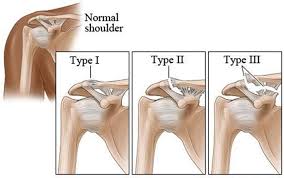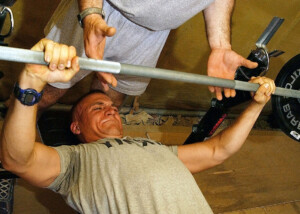Why is it that a year, even two years after a grade 2 AC separation, an athlete can still have pain and struggle through weightlifting sets?
“If the patient is still symptomatic it may either have not been a grade 2 injury or it may need a reconstruction,” says Jonathan Oheb, MD, North Valley Orthopedic Institute, Chief of Orthopedic Hand and Upper Extremity Surgery.
“I would advise seeing an orthopedic surgeon.”
Does this mean that a grade 3 AC separation was misdiagnosed as a 2?
Dr. Oheb says, “Not necessarily. You can have a grade 2 injury which is persistently symptomatic. I cannot give you a simple answer to this question.
“Some things require a thorough evaluation of the patient and the X-rays to determine the root cause of a patient’s pain. There is no range of motion test that strongly points to a grade 3.”
What Is a Grade 2 AC Separation?

A grade 2 acromioclavicular (AC) separation is when the AC joint is partially dislocated, and the acromioclavicular ligament is completely torn.
This ligament connects the acromion, a part of the shoulder blade, to the clavicle (collarbone).
The complete tear of this ligament causes the clavicle to move partially out of alignment with the acromion, resulting in visible displacement and pain.
Despite the complete tear of the AC ligament, the coracoclavicular ligaments, which connect the clavicle to the coracoid process of the scapula, remain intact.
These ligaments stabilize the AC joint and help prevent the clavicle from shifting excessively.
Their intact condition provides some stability to the joint, even though the AC ligament is damaged.
In some cases, if the symptoms do not improve or if the injury severely impacts shoulder function, surgical intervention may be needed to repair the torn ligament and re-establish joint stability.
Symptoms
- The pain ranges from medium to severe.
- Swelling may be present.
- Movement of the arm induces pain.
- There may be a small bump where the clavicle bone ends, at the top of the shoulder.
- Pushing the clavicle with a hand may move it. Do not experiment with this. It’s not necessary for you to evaluate the injury this way. Only a doctor should do this.
- There may be pain when touching the area.
With proper diagnosis and treatment, a patient should not experience pain during strength training, weightlifting or other physical activities long after treatment and rehab end.
If you have recently injured your shoulder, and it’s so painful that lifting your arm straight out in front of you (frontal raise) is impossible due to pain — see a doctor as soon as you can.
If your injury does not involve the AC joint, it may be a clavicle fracture.
 In addition to hand, elbow and shoulder care, Dr. Oheb provides comprehensive surgical and nonsurgical treatment for all orthopedic conditions of the hip, knee and ankle, including broken bones and injuries. jonathanohebmd.com
In addition to hand, elbow and shoulder care, Dr. Oheb provides comprehensive surgical and nonsurgical treatment for all orthopedic conditions of the hip, knee and ankle, including broken bones and injuries. jonathanohebmd.com
 Lorra Garrick is a former personal trainer certified through the American Council on Exercise. At Bally Total Fitness she trained women and men of all ages for fat loss, muscle building, fitness and improved health.
Lorra Garrick is a former personal trainer certified through the American Council on Exercise. At Bally Total Fitness she trained women and men of all ages for fat loss, muscle building, fitness and improved health.
.









































